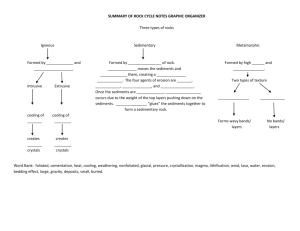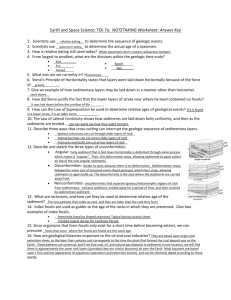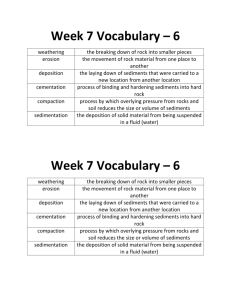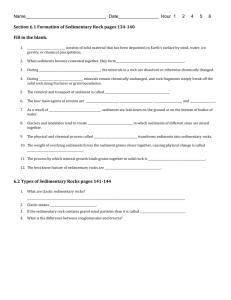Name - Ocean Drilling DLP
advertisement
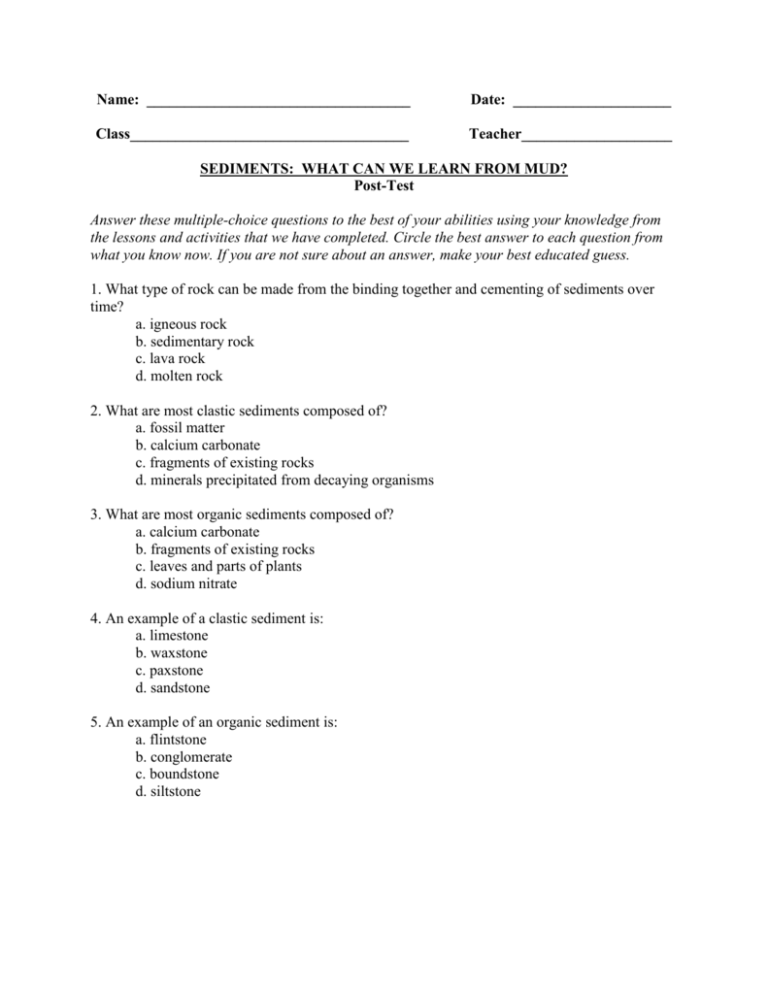
Name: ___________________________________ Date: _____________________ Class_____________________________________ Teacher____________________ SEDIMENTS: WHAT CAN WE LEARN FROM MUD? Post-Test Answer these multiple-choice questions to the best of your abilities using your knowledge from the lessons and activities that we have completed. Circle the best answer to each question from what you know now. If you are not sure about an answer, make your best educated guess. 1. What type of rock can be made from the binding together and cementing of sediments over time? a. igneous rock b. sedimentary rock c. lava rock d. molten rock 2. What are most clastic sediments composed of? a. fossil matter b. calcium carbonate c. fragments of existing rocks d. minerals precipitated from decaying organisms 3. What are most organic sediments composed of? a. calcium carbonate b. fragments of existing rocks c. leaves and parts of plants d. sodium nitrate 4. An example of a clastic sediment is: a. limestone b. waxstone c. paxstone d. sandstone 5. An example of an organic sediment is: a. flintstone b. conglomerate c. boundstone d. siltstone 2/Sediments Post-Test 6. What are layers of sediments called? a. data b. strata c. stripes d. rock 7. Which of these ideas is a part of the fundamental "rule" of stratigraphy? a. in undisturbed layers of sediments, the youngest will be at the top b. in undisturbed layers of sediments, the oldest will be at the top. c. in sedimentary rock, the thickest layer is the oldest. d. in a sediment, the thinnest layer is the oldest. 8. What can we learn from sedimentary rock? a. geographic history. b. geologic history. c. geneologic history. d. genetic history. 9. The concept that the oldest layer of a sediment would be at the bottom of a sequence is: a. the fundamental "rule" of cartography b. the fundamental "rule" of geography c. the Principle of Superstition d. the Principle of Superposition 10. What is used to collect sediment core samples? a. drills b. bulldozers c. shovels d. nets 11. Which step is a part of preparing a core sample for scientific analysis? a. Grinding up the whole core for microscopic analysis. b. Splitting the whole core into smaller sections that are easier to examine. c. Coating the core with nitric acid. d. Storing the core in a heated vault. 12. Which country stores sediment core samples described in this unit? a. Russia b. France c. United States d. China 3/Sediments Post-Test Use the following illustration to answer questions 13 and 14: 13. Which layer of this core sample is the oldest? a. A b. B c. C d. D 14. The darkest layers of this core sample represent glacial periods. The lightest layers reveal interglacial periods. Which layer is evidence of an extended glacial period? a. A b. B c. C d. D
